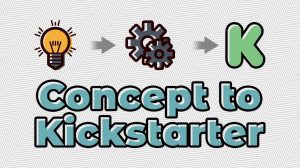“I love my bathysphere, The Orpheus, because it carries me far below the surface of the ocean…and hopefully all the way back up!”
If you’ve ever seen a statement like this one on social media, always accompanied by the hashtag #bbbathysphere, chances are good you’re already familiar with Scott Slomiany’s Bargain Basement Bathysphere. This solo roll-and-write campaign game about piloting a ramshackle submersible made waves when it was first released in 2018 as an entry for BoardGameGeek’s solitaire print-and-play contest. Buoyed by its light campaign/legacy elements and a clever social media marketing scheme that gave players an in-game boost for publicly posting their ship’s name, Bargain Basement Bathysphere spanned two dozen individual scenarios and a whopping 60 pages that needed printing. That’s a bit much for your average gamer (and even me) so when WizKids announced in early 2022 that they would be releasing a physical version of Bargain Basement Bathysphere it felt like a great opportunity for the game’s wry, absurd humor and accessible gameplay to reach a wider audience.

Splashdown
The retail version of Bargain Basement Bathysphere has been condensed from its original format without sacrificing much of the content. A full campaign of Bargain Basement Bathysphere takes place over 20 scenarios, though players might not play through every scenario depending on their performance. Each scenario uses one of three dry-erase maps depicting underwater pathways along which the player will guide their trusty floating barrel. In most cases, the scenario rules limit which specific areas of the map are available, which helps get the most out of the limited components.

While the campaign is chock-full of special rules, the vast majority of scenarios involve navigating the map, reaching specific spaces to score points, and—most importantly—returning to the surface before the bathysphere cracks apart from the pressure or the limited supply of Oxygen runs out. Three tracks on the map show the remaining Oxygen, Damage, and Stress (a lesser form of Damage). Reaching the bottom space of any of these tracks ends the scenario in a loss.

The player starts by rolling a handful of dice, spending them one by one over subsequent turns to move the indicated number of spaces. Once the player runs out of dice to spend, or simply wishes for a new set of rolls, they’ll mark off an Oxygen and reroll all of their dice. The player may also use one of their precious rerolls to reroll a single die.
When moving, the player must pay attention to which spaces on the map they pass and which they land on and mark the three tracks accordingly. Some spaces have no effect at all. Others have a negative effect: these typically add Stress to or inflict Damage on the poor bathysphere, though they might instead use up a precious point of Oxygen. Landing on spaces like this crosses them out with no effect, while passing them incurs the effect but still crosses them out. (Crossed-out spaces do not trigger, though they will now increase Stress when landed on in the future.) While it might seem easy to pick and choose which tracks to sabotage, they’re all related: cumulative Stress can inflict Damage, which in turn reduces the amount of dice rolled when using Oxygen. Players must balance their three tracks while still making the most of their movement around the map.

Over the course of the campaign, a variety of interesting twists on this formula are introduced. Whirlpools, for example, cause the player to reroll all their available dice and take Stress for each die that matches the listed values. This can be a very dangerous space when working with a full set of dice, or only a minor risk if most of the dice have already been spent. Other spaces open up limited movement options between different sections of the map, enabling players to find a quick shortcut or dive deeper in hopes of getting better rewards.
Ah, the rewards! Each map features different ways to earn points, typically by landing on the appropriate space. Rescue divers before their Oxygen runs out, salvage wrecks for loot, collect marine life for the local sushi restaurant culinary aquarium, and explore the depths of the ocean floor in order to rack up the score. Many scenarios feature either a specific score goal (“40 points”) or a specific set of requirements (“rescue 3 divers”) alongside the more generic goal of survival.

These also factor into the game’s campaign/legacy aspect. Over time, players will have opportunities to improve their bathysphere through three different minigames (a pad of double-sided minigame sheets is included for this purpose). Depending on their performance in each scenario, players can earn a variety of upgrades. Additional Oxygen, ways to adjust dice rolls at certain times, and new movement options are just a few of the ways to soup up a bathysphere.
Players can track their scores over the course of the campaign if desired or simply play through the campaign trying to win each individual mission. The game is fully replayable after completing the campaign.
Going Overboard
Bargain Basement Bathysphere starts out strong. The writing is sardonic and humorous without being annoying, the box and maps look great, and the dice hit the right balance between chunkiness and rollability. The core rules take up a scant two pages, with the scenarios adding new rules over time, making it easy to dive right in and get started. From the first scenario, I was absolutely hooked.

Unfortunately, the deeper you dive the rockier it gets. My problems with the game started with a few production issues: the maps are cramped and a little hard to read, with spaces just a little too small for the included bathysphere meeple (which, in my case, got quickly smeared with marker on the very first move of the first scenario). Because each scenario only uses a subset of the map, there’s a weird push-and-pull between looking at the campaign book and the board to figure out where you can go; this can be fixed by crossing out unusable paths at the cost of additional setup time and visual clutter.
Things got even worse when I discovered that certain scenario maps were unplayable as written. For example, one map makes use of a one-way path to limit access to an important objective…but the path dead-ends after only a few spaces rather than connecting elsewhere, meaning that grabbing the objective you need prevents you from returning to the surface (always a big no-no when underwater in a barrel). Scouting around on BoardGameGeek resulted in a few comments by the designer on how to play around these errors, but they come up far too frequently for my taste and make it difficult to jump in and play.
Adding to this is the emergent rules complexity that quickly becomes an anchor on an otherwise lightweight game. Increased setup time, multiple minigames to play after each scenario, and easily forgotten (or poorly written) rules all add up. Many scenarios instruct the player to replay them if they lose, but take away the rewards for victory–essentially padding the campaign’s length by sucking the fun out of it. Frankly, I ignored these requirements and still felt the game went too long. By the halfway point of the campaign, I found myself struggling to get Bargain Basement Bathysphere back to the table.
If that sounds harsh, it’s because I’m disappointed that the published version of Bargain Basement Bathysphere fails to make the most of its abundant potential. It’s overflowing with possibilities. The combination of familiar mechanics, an apt theme, and pacy moment-to-moment gameplay should make for a sure-fire winner. As I mentioned in my review of Under Falling Skies, I really enjoy dice-driven games where you have enough control to feel empowered, and Bargain Basement Bathysphere rides that line extremely well. Every decision you make, starting with setup, is consequential. The path is densely packed with dangers, so a single reroll feels like it can potentially tilt the outcome. The decision of when to take a deep breath (literally and figuratively) and reroll the dice is absolutely delightful. Even the simple choice of whether to place a 4 before a 6 or the other way around can take on massive ramifications. It’s a great engine, and while I’ve bemoaned its surprising complexity, I do appreciate how many cool bits and bobs are bolted to the game’s chassis by the end of the campaign. I just wish that they were attached a little more expertly, a little more judiciously.

The thing that kept me going through the back half of the campaign was the desire to explore all the innovative extras, regardless of whether they made the game more enjoyable. From a design perspective, there are so many great ideas packed into this slender box. Taking the basic gameplay and finding 20 ways to twist and turn its limited components is a feat of engineering that made me smile in delight several times. When it works, it works…which makes the too-frequent moments when it doesn’t all the more irritating.
What I can say about the published version of Bargain Basement Bathysphere is that, though it might be all over the place, at least it’s trying to go somewhere. It’s ambitious, erratic, and wild in a way that should be more exciting than it is. Sadly, like the titular ship, Bargain Basement Bathysphere tries to do too many things at once and fails to complete its mission.












Add Comment